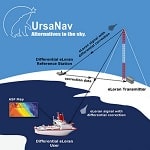 Telecommunications, energy, finance and transportation are just four among the many critical infrastructure / key resource sectors that have come to rely solely on GPS for positioning, navigation and timing (PNT). In fact, the U.S. Department of Homeland Security (DHS) has determined that 11 of the 16 critical infrastructure sectors in the U.S. are critically dependent on GPS for timing. While we can start to imagine what a day without GPS might be like, we’d really rather not — it would be somewhat depressing and really quite dangerous. We would rather imagine a day when there is a wide-area complementary solution available that protects and augments GPS.
Telecommunications, energy, finance and transportation are just four among the many critical infrastructure / key resource sectors that have come to rely solely on GPS for positioning, navigation and timing (PNT). In fact, the U.S. Department of Homeland Security (DHS) has determined that 11 of the 16 critical infrastructure sectors in the U.S. are critically dependent on GPS for timing. While we can start to imagine what a day without GPS might be like, we’d really rather not — it would be somewhat depressing and really quite dangerous. We would rather imagine a day when there is a wide-area complementary solution available that protects and augments GPS.
In this article, we will delve into such a solution: Enhanced Loran, or eLoran for short. We will explain how it works, debunk some myths, speculate on how it could be used in the U.S. (and abroad), highlight the state of current technology and discuss the state of the possible. We will also summarize the state of eLoran in the world and where things might go from here.
